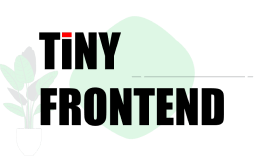Quiz 1113: HTML Empty Elements
What are the Empty Elements in HTML? What are their characteristics and how do they differ from other elements?
Quick Answer
Empty elements, also known as void elements, are HTML elements that don't have any content between their opening and closing tags. They represent self-contained entities and are closed within the opening tag itself. Examples include <br>, <hr>, <img>, and <input>.
Explain in Depth
Empty elements in HTML, also known as void elements, are special types of elements that don't contain any content between their opening and closing tags. Instead, they are self-contained and are closed within their opening tag itself. This means they have no content to display, and their purpose is to provide specific functionality or structural elements within the HTML document.
Characteristics of Empty Elements:
- Self-Closing: Empty elements are closed within their opening tag, using a forward slash (/) before the closing angle bracket (>) like this:
<br />. - No Content: They don't contain any content between the opening and closing tags.
- Specific Functionality: They serve a particular purpose, such as line breaks, horizontal rules, images, or input fields.
Examples of Empty Elements:
Here are some common examples of empty elements:
<br>: Line break, used to insert a line break within the text.<hr>: Horizontal rule, used to create a horizontal line across the page.<img>: Image, used to display images within the page.<input>: Input field, used for user input, such as text boxes, buttons, checkboxes, etc.<meta>: Metadata, used to provide information about the HTML document, like character set, description, keywords, etc.<link>: Link, used to link external resources like CSS stylesheets or other HTML documents.
Using Empty Elements in TinyFrontend.com:
Let's say you want to add a line break after a paragraph on your tinyfrontend.com blog:
<p>This is a paragraph of text.</p>
<br />
<p>This is another paragraph of text.</p>
Similarly, you can use the <img> element to display an image within your blog post:
<img src="https://tinyfrontend.com/images/logo.png" alt="TinyFrontend Logo" />
Note:
While most HTML parsers handle empty elements correctly, it's considered best practice to close them properly, even though it's not strictly necessary in all cases. This promotes cleaner code and avoids potential issues with older browsers.
